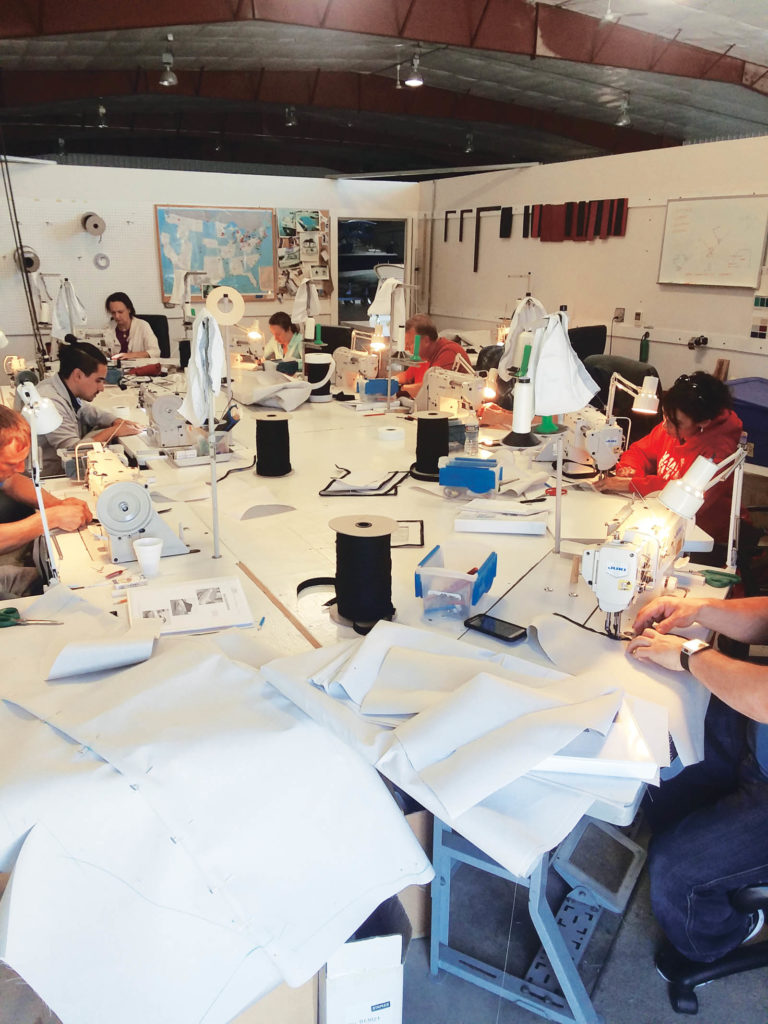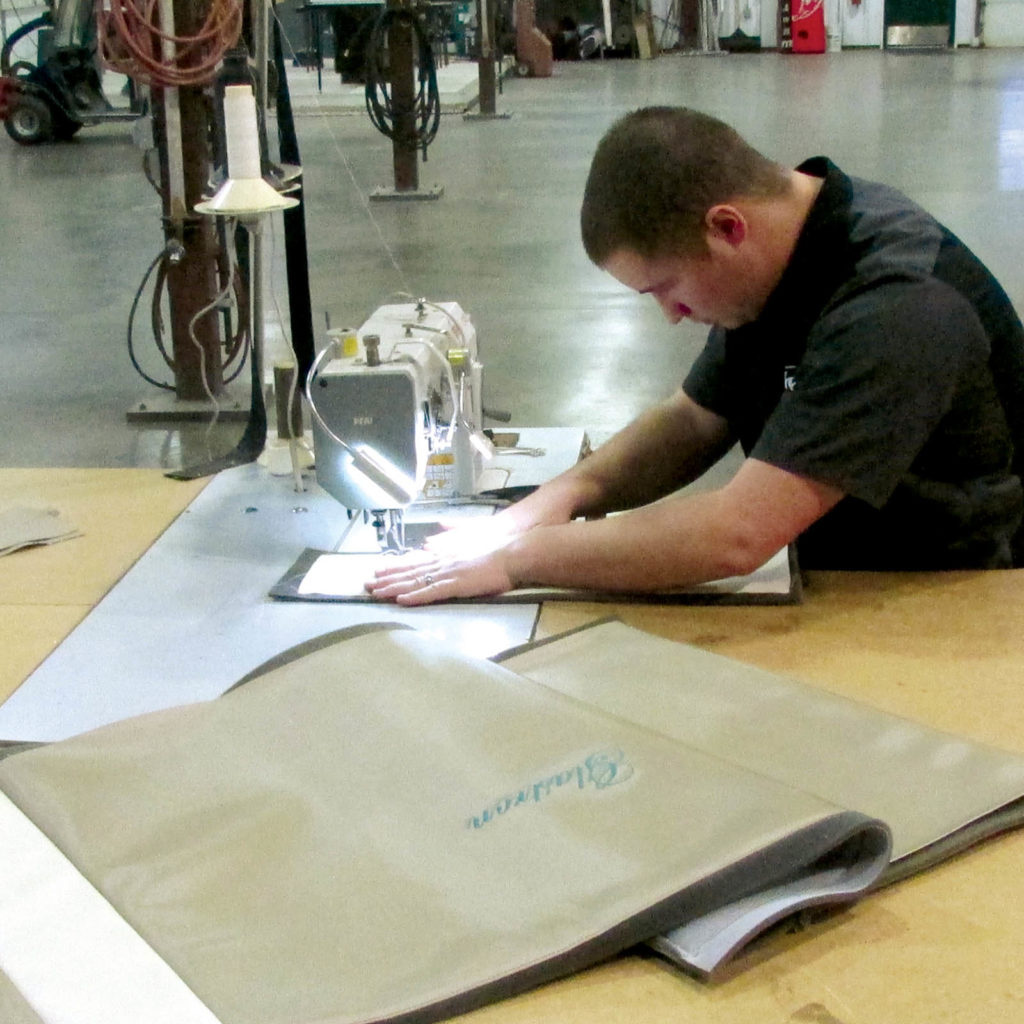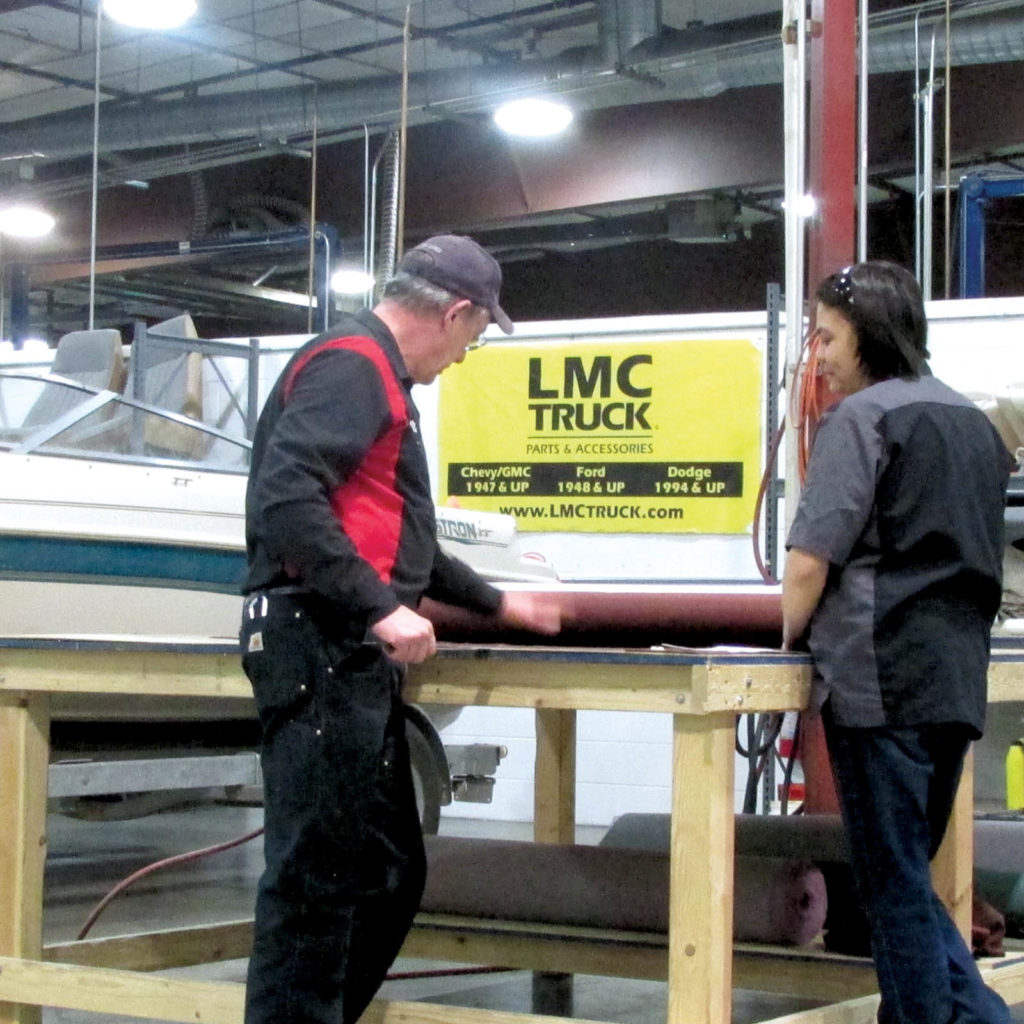Tech and training are sparking interest.
by Jeff Moravec
There’s a simple, well-known and significant problem in the fabrication business: too much work, not enough workers. “Fabricators have more business than they can handle,” says Russ Griffin, co-owner of Northcoast Marine Specialties LLC in Port Clinton, Ohio. “The downside is that customers aren’t getting service because there aren’t enough people in the industry right now.”
The reasons for the problem—and the way out of it—are not as simple or well-known as the problem. But fabricators, educators and industry experts do see a dim light at the end of the tunnel.
How we got here

Sarah Sladek, CEO of XYZ University, a leadership consulting firm based in Richmond, Va., and the author of five books on employee engagement among younger generations, traces the issue back to the 1980s. She says the Reagan administration promoted radical changes in the U.S. education system to ensure that workers could compete on a global scale.
“The message was you need to go to college, you need to get a degree, you need to get ready for the global economy,” says Sladek. “Everything got replaced with advanced placement and honors classes.”
What went away? Any kind of emphasis on the trades as a career option.
“We’ve now educated a couple of generations of students who have had little or no exposure to the trades,” explains Sladek. “They are very unaware of the opportunities that exist for going into the trades. We kind of stopped preparing students, and that whole path to the trades became extinct. Now we’re realizing that we don’t have the workforce we need for many of our businesses to survive.”
A new generation gap
But it’s not just a lack of preparation for the trades that is causing issues. It’s also the new-fashioned generation gap that employers from all industries have been struggling with.
Starting at the end of 2015, Sladek says that for the first time in 34 years, baby boomers were no longer the majority in the workforce, which has created some issues. “There were certain traditions, methodologies and expectations in place all based on industrial-era concepts. But this new generation wasn’t raised in the industrial era,” she says.
“The idea of scheduling, systems, hard work and paying your dues is lost on this generation. They’ve been raised during an era that celebrates innovation, instant gratification, collaboration, globalization—a totally new value system.”
Sladek says young people can struggle in traditional companies that are based in industrial-era values and processes.
“Naturally, the leaders and the managers tend to say, ‘Oh my gosh, you young people are so difficult and you don’t want to work.’ And the young people say, ‘You’re so stubborn and you’re stuck in your ways and you’re not open to new ideas.’ Then there’s a chasm, and turnover occurs.”
Untapped opportunities
If there is a stalemate here, then, who needs to change?
“There are people who won’t like this answer,” says Sladek. “But it’s the leaders.”
Sladek says there’s no use denying the shift or change from the industrial-era to the post-industrial-era in recent years. It’s a change that favors the innovative and more global skill sets and perspectives of the younger generation. She believes the companies that will continue to succeed are those led by people who can compromise, are open to new ideas and people, and are willing to adapt.
“A lot of people jump to the conclusion that we have to entirely cater to young people, but that’s not what I’m saying,” she says. “You make room for them, have dialogue with them, and you seek common ground. Every generation has something to learn and something to teach. That’s the untapped opportunity.”
Successful change is possible

If change has to happen, there are educators and fabricators out there who are finding ways to do it successfully.
Charles “Mac” McDonald, an instructor at WyoTech, a technology school in Laramie, Wyo., that includes a specialty curriculum in trim and upholstery, says he finds it important these days to allow students to tap into their creativity to get them interested in the upholstery trade.
“I give my students a little poetic license when it comes to designing things,” says McDonald. “I encourage them to think outside the box; if they have an idea, let’s check it out.
“Old-school applications don’t necessarily need to go away,” says McDonald. “We just need to adapt.”
The younger generation’s familiarity with—and love for—technology can also be used to enhance the appeal of the workplace.
“I started out knowing absolutely nothing about the industry or the trade, although I’d always had an interest in boats,” says Mitch Lemmen, who was hired by Canvas Innovations in Holland, Mich., in 2012.
Lemmen says he enjoyed working in fabrication from the start. “It was something different every day, which was huge, because I don’t like to sit and do the same thing over and over,” he explains. But what really made him think the job could be a career for him was being allowed to lead an effort to modernize the company’s technology.
“Not a lot of young people like me want to go out there with a Sharpie and scissors, but if you throw someone a Proliner and a computer, like we now have, and have them work with CAD, that’s pretty appealing,” explains Lemmen, who is now the company’s production manager.

“Some of the traditional shops that aren’t moving into technology are not as appealing to the younger generation, who are very technology driven,” says Lemmen.
McDonald also says it’s important to stress the trades as a viable career option.
“I see a lot of people who have graduated from college and three or four years later they still haven’t found a job in their field,” he says. “These young people at WyoTech realize they could do a lot better in a trade than trying to find a ‘pie in the sky’ dream job that may not be there.”
Griffin agrees. “What’s happening,” he says, “is some people are saying they’re not going to tell their kids to go to college because they’re coming out $120,000 in debt and they can’t find a good job.”
The experience puzzle
Griffin also tries to find a way around the issue of experience—young people don’t have it, and the fabricators want it.
“So many new employees come into an environment where they’re going to get taught by the canvas shop owner,” he says. “That’s always been kind of a setup for failure because the canvas shop owner doesn’t have the time to devote to training a person properly.”
Griffin admits that he has an advantage over most fabricators, because he operates a canvas training school and can simply run new employees through it. Regardless, however, he says the solution is a simple one: “I don’t hire talent. I hire personality. What they don’t know, I train them—
I teach them.
“If you look for the right personality, someone you believe is going to stick it out or give it a healthy try, send them to school,” he explains. “When they come back, they’re ready to hit the ground running; they’re ready to produce a product for you. You can fine-tune them to your shop, but they have the basics down. They know where to start in the morning instead of standing around waiting for you to give them an order.”

For all the issues in the industry, Griffin says there is reason for optimism.
“For the first time in 15 years, we’re starting to see a young generation coming for training,” says Griffin. “Up until recently, our average student was coming up on 50 years old, maybe looking at an early retirement and wanting something to do to make a little money. But I’m starting to see young people who are saying, ‘Hey, I’m not going to be a doctor or a lawyer or a CPA.’ They are trying to find their own niche in the marketplace.”
Chris Eicher, a WyoTech student from Tipton, Iowa, fits that mold. “I didn’t really want to go to college, but trade school was an option,” he says. “I’ve worked on vehicles and I enjoy doing the upholstery. I know places don’t really want to hire younger people and take the time to teach them, so I was drawn to WyoTech as a place to learn the trade.
“Schools really do tell you that you need to prepare yourself for college and that you need to go to college,” says Eicher. “But you don’t. The trades are a really cool opportunity.”
Jeff Moravec is a freelance writer from Minneapolis, Minn.
SIDEBAR: Making interns feel welcome

It doesn’t take long to realize that at Global Impex USA, a canvas supplier headquartered in St. Cloud, Minn., the attitude is that the company exists to help its workers, not the other way around.
The company was founded in 2017 by King Mukherjee, a business professor at nearby St. John’s University and a veteran of the textile business. From the beginning, says Mukherjee, the goal was to provide young people from area colleges the opportunity to learn business in general and the textile trade in particular.
Currently, says Mukherjee, the company has about 20 interns from St. John’s as well as St. Cloud State University, the University of Minnesota (the Twin Cities and Duluth campuses) and a number of other schools. “This gives them a foot in the door,” he says. “It gives them some experience in a corporate culture.”
Mukherjee says students are attracted to the program because they are given substantial responsibilities, such as in sales and marketing, while working flexible schedules, including at a co-working space in downtown Minneapolis.
“The students also like that we don’t micromanage them,” he adds. “We just give them some direction and let them go at it. They’re looking for experience—that’s the most important thing.
“Our industry has not done a good job of reaching out beyond the industry itself,” he says. “People don’t know about it or why they should be interested in it. What we’re doing is trying to generate some interest in our industry as a career path.”
 TEXTILES.ORG
TEXTILES.ORG


